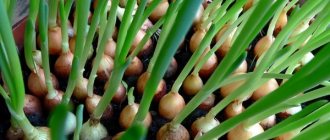Popular varieties of carrots
Carrot varieties are divided into 3 categories - early-ripening, mid-ripening and late-ripening. In each of these categories there are recognized favorites - varieties that, with proper care, can provide a good harvest.
The following varieties are popular among early ripening varieties:
- Amsterdam. Provides a large harvest. The fruits are not prone to cracking and are characterized by a bright orange color.
- Finchor. The variety is resistant to diseases and has a high carotene content. Harvesting becomes possible 10 weeks after planting.
- Parmex. The choice of this variety makes it possible to obtain medium-sized spherical fruits.
A feature of early ripening varieties is their unsuitability for long-term storage and the absence of a pronounced sweet taste. The choice of these varieties of vegetables allows you to harvest in less than 3 months after planting.
The most popular varieties of mid-season carrots (the harvest is harvested in late summer - early autumn, and the fruit can be stored for several months) include:
- Vitamin. The advantage of the variety is considered to be large fruits and a high level of beneficial elements.
- Nantes. Storing the harvest (the variety produces fruits that are characterized by a cylindrical shape) is possible until mid-winter.
- Moscow winter. The advantage of this variety is the carrot’s resistance to disease and long-term storage. The harvest is represented by elongated fruits.
Late-ripening carrots will ensure the availability of vegetables in the diet throughout the winter-spring period. For long-term storage, the following varieties are chosen:
- Shantanay. It is characterized by large short root crops that are stored until a new harvest is obtained.
- Queen of Autumn. Provides a large harvest and is disease resistant.
- Vita Longa. Carrots are not prone to cracking and are well preserved until the next harvest. Root vegetables are characterized by an elongated shape and a high content of nutrients.
List of varieties
The most popular varieties are those with a bright orange color , sugary and crispy pulp, and large sizes.
The sweetest
Sweet tooth . Small core. Average weight 80-100 g. Ripens late. Bonuses: keeping quality, productivity, wonderful taste.- Olympus . High levels of carotene and sugars. It grows up to 22 cm in length. The color is red-orange.
- Marmalade . Sugary hybrid with medium ripening. Weight 140-200 g. Long shelf life.
- Caramel . The pulp contains a lot of sugars. Ideal for children's and dietary diets, making purees and juices. Length within 15-20 cm.
- Amsterdam . Mid-early variety. The pulp is sugary, juicy, crispy. Weight 140-200 g. Length about 20 cm.
- Nastena Slastena . Ripening in 76-120 days. The core is small. Weight from 80 to 180 g.
- Honey-sugar . High-yielding hybrid of mid-early ripening. The shape is cylindrical. With honey aroma and high level of sugars.
Different regions of Russia have different climatic conditions and therefore the subtleties of growing carrots will be different. On our website you can learn about growing vegetables in the Urals, Siberia and central Russia.
Large and long
- Chantenay Royal . Grows up to 18-20 cm in length. Weight varies within 0.2 kg. Ideal for storage.
- Baltimore . Hybrid from the Berlicum group. The weight of 1 vegetable reaches 250 g. High yield - 120 t/ha.
- Jerada . Early hybrid. Harvest delivery in 90 days. Weight 200-250 g, length 25 cm, diameter 5-6 cm.
- Abaco . Ripening in 110 days. Average dimensions 18-20 cm. Diameter 4-6 cm. Does not crack.
Nobody likes bitter and small carrots. To grow beautiful root crops with excellent taste, sow the seeds in loosened soil with sand and peat, thin out, and loosen the rows. They are fed in several stages with mineral solutions with the obligatory content of potassium, phosphorus, and boron.
Choosing a place for carrots
Carrots are considered an unpretentious crop, but experienced gardeners know that in order to get a good harvest, the choice of planting site must be approached with special care. Choose a lighted place with fertile soil characterized by neutral acidity (6-7 pH). Growing a crop for two years on one plot is not allowed.
A good harvest is obtained by gardeners who plant vegetables in places where cucumbers, cabbage, tomatoes and legumes were grown last season. A good predecessor for carrots is potatoes. It is not recommended to choose areas previously used for growing herbs. To carry out pre-winter sowing, preference is given to areas located on a hill (the risk of seeds drowning when the snow melts is eliminated).
When to sow carrots and planting rules?
It is recommended to sow seeds during the period when the air temperature reaches +4-6°C. In most cases, early varieties of the crop are sown in mid-April, and mid-season and late-season varieties in the second half of April. It is allowed to plant until the 10th of May. At the end of May and June it is possible to sow mid-season varieties, but in this case the harvest will not take place before October.
Before planting, it is recommended to prepare the seeds: simple steps help increase their germination. There are several ways to process planting material. Seeds can be poured into a canvas bag and placed in open ground to a depth of no more than 30 cm for 10 days.
Another method is to place the seeds in a tight bag in hot water (water temperature should not be lower than +50°C) for up to half an hour and then cool with cold water. Also, to increase germination, seeds are immersed in a growth regulator solution for 20 hours. The procedure is carried out using compressors for aquariums or bubblers.
Planting carrots requires compliance with the following rules. The sowing furrows are located at a distance of 20 cm from each other. Before planting, they are watered and sprinkled with ash. The seeds are placed at a distance of 1-2 cm to a depth not exceeding 2-3 cm. After the seeds are sown, the bed must be covered with earth and mulch. It is allowed to use film for covering. You can plant onions, potatoes or cucumbers nearby. It is recommended to sow radishes or mustard along the edges of the bed, which will mark the boundaries of the area with carrots.
If the seeds are planted in the fall, the seeds should be placed to a depth of no more than 2 cm. When planting before winter, mulching is carried out using humus or peat. Sprinkling the beds with snow helps increase productivity.
Growing and caring for carrots
In order for carrots in the garden to produce a rich harvest, compliance with the rules of cultivation and proper care of the crop is required. It is recommended to feed the vegetable, loosen the soil and ensure pest and disease control. During the growth period, weeding is carried out to remove weeds.
A necessary component of growing vegetables is proper watering. The stimulation of seedlings is facilitated by the sprinkling method, and after their emergence it is recommended to irrigate with small volumes of water every 2-3 days. The onset of the fruit formation stage requires a change in the irrigation regime: the volume of water increases, and its frequency decreases. During the growth period, you need to water the bed once a week, ensuring moisture penetration of 10-15 cm. Stop watering a month before harvest.
How to properly discharge carrots in the garden?
During the growing process, thinning the beds is performed several times. The first thinning is carried out when the seedlings reach a height of 7 cm (when several leaves appear). The second time you need to discharge the carrots at the moment when the root crops have a diameter of 1-2 cm (the distance between the shoots is ensured within 2-7 cm). When removing a sprout, it must be pulled up (to avoid damaging the roots of the neighboring root crop). After thinning, the bed is watered.
It should be noted that the distance between the roots affects their size. To obtain small-sized fruits (they have a sweeter taste), it is recommended to leave a distance between shoots of 2-3 cm. If you want to grow large root crops, the interval is increased to 5-7 cm.
Why do carrots crack in the garden?
Growing even and smooth fruits is the goal of every gardener, but often one has to deal with cracking of the vegetable. In most cases, the causes of cracks are improper watering and overfeeding with fertilizers. Planting seeds in heavy clay soils also leads to cracking of the fruits as a result of exposure to high pressure (the crop prefers light, loose soils). The vegetable may crack due to the introduction of fresh manure (rotted manure must be used). Untimely harvesting also leads to cracks.
What to consider when planting carrots in open ground with seeds
The carrot, familiar to all of us from childhood, is not such an easy vegetable to grow; it is quite capricious. To get a truly generous harvest, and the harvest to be preserved without loss, you need to take into account some serious points:
- the bed with carrots should be located in the sunniest place; in shaded areas, carrots will grow poorly and will not produce a full-fledged vegetable;
- to get sweet carrots for the table, you need to plant them in soil that is not oversaturated with acids;
- excessive watering leads to the fact that the carrots begin to grow vigorously, but become coarser and become more likely to be fodder than table food;
- this vegetable especially loves loose soil, otherwise it will have a curved shape;
- carrots do not like fresh manure, it causes it to bend, the root is deformed, which leads to an ugly shape of the fruit;
- if carrots are not watered for a long time, they lose their juiciness and sweetness;
- when, after a long dry period, abundant and frequent watering begins, the root crops crack;
- without thinning, frail fruits grow that are not capable of long-term storage;
- Rough thinning can lead to the fact that the neighboring (remaining) roots are deformed, and several ugly fruits grow from one carrot.
If you take these factors into account, carrots will delight you with smooth and tasty fruits that can be stored until the next harvest. But before you plant the seeds, you need to prepare the soil. Read: feeding carrots in open ground in the Moscow region!
Diseases and pests of carrots
Carrots are susceptible to various diseases and the negative effects of pests. The most common diseases for this crop are: rhizoctonia (gray spots form on root crops and mycelium develops; when infected during the growing season, carrot leaves turn yellow and the tops dry out), alternaria (causes the appearance of plaque on the fruits and spots on the tops), phomosis ( affects vegetables at the stage of technical ripeness) and cercospora (the disease leads to disturbances in the formation of the fruit and does not allow it to develop properly).
When signs of drying of the tops appear, the seedlings should be carefully examined: this sign often indicates that the crop has been damaged by insects. Danger to the vegetable comes from psyllids (the pest sucks the juice out of carrots), cutworms (insect larvae gnaw at the top of the root crop) and carrot flies (the pest gnaws the root crop).
Who eats carrots in the garden?
The appearance of small animals in the beds can lead to significant damage to the crop. Mole rats and moles are able to take fruits into their burrows, and voles are able to gnaw out large cavities. Danger to the vegetable are mole crickets, nematodes, wireworms and slugs. Regular weeding of the beds allows you to avoid their appearance on the site. In preparation for the dacha season, it is recommended to subject the area to deep plowing. If pests appear, it is possible to combat them with the help of chemicals (use is allowed without exceeding the established doses).
How to get rid of carrot flies in garden beds?
The carrot fly is considered the most common pest. The insect is capable of creating deep tunnels in fruits, leading to their cracking and damage to their shape. The pest has a negative effect on the taste of the vegetable. Early planting and removal of weeds helps prevent the appearance of carrot flies. Positive results are brought by constant loosening and thinning of seedlings.
To combat flies, use an infusion of orange peels and a decoction of tomato tops. It is allowed to sprinkle the garden bed with ground pepper and mustard powder. You can use various preparations: Fitoverm, Actellik, etc. You can spray the tops with infusion of onion or wormwood.
Cleaning
The answer to the question of how to grow sweet carrots often depends on the nuances of harvesting. You can’t dig it up early, because in the last month of the growing season the vegetable intensively gains sugar. But it’s even more dangerous to leave carrots in the garden too long. A root crop that has been sitting in the ground begins to grow overgrown with young roots, becomes tough, and begins to taste bitter. To avoid such mistakes, when sowing, pay attention to the growing season of the variety and adhere to them.
Typical mistakes:
- Early planting of varieties with a short growing season. If the ripening period arrived at the end of August, and the root crops were removed a month later, you will end up with woody, hairy roots and tasteless carrots.
When to remove carrots from the garden for storage?
Experienced gardeners harvest crops as they ripen, so the harvest time depends on what varieties are planted on the site. Early carrots ripen in July, mid-season carrots in August, and late varieties are harvested in the second half of September and early October. Cleaning is done on a warm and dry day. If possible, the fruits can be pulled out of the soil by the tops, but the most common method is to remove the roots using a shovel or fork.
How to leave carrots in the garden for the winter?
The need to store vegetables in the garden in most cases arises when there is a large harvest. The advantage is keeping root vegetables fresh (in the cellar there are often situations when carrots wither and become unsuitable for consumption). To store vegetables in the garden, you need to stop watering a month before cutting the tops.
After a month, the weeds are removed, and the tops are cut at the root. Then the bed and the surrounding area (1 m) are covered with sand (the height of the layer should not exceed 5 cm) and covered with polyethylene film. To create the next - insulating - layer, sawdust, leaves or peat are used. The insulating layer is covered with plastic film or roofing felt, which is secured using available materials.
Rules for storing carrots
The recommended temperature for storing the crop is 0…+4°C. Wooden containers are used for storage. Before placing the fruits in the container, sand or sawdust is poured onto the bottom, after which they are laid (it is necessary to avoid contact of the root crops). A layer of carrots is covered with a layer of sawdust or sand (alternating layers occurs before filling the container).
Growing carrots requires compliance with agricultural technology. Provided that the requirements for planting and caring for a vegetable crop are met, you can get a large harvest of carrots, and proper storage will ensure its presence in the diet throughout the fall, winter and spring until a new harvest appears.
Rate this article:
How to grow carrots. Secrets of summer residents
Care
Growing carrots can be an absolutely simple and uncomplicated task if:
- plant the crop in due time;
- water moderately, if necessary;
- fertilize;
- weed the ground next to the plants;
- thin out;
- know how to protect against diseases and pests.
Caring for plants begins with choosing the timing of planting. If seeds are sown in dry soil in hot weather, pests will not give the plant the opportunity to fully develop. And additional watering will only compact the soil.
When overmoistened, root crops are subject to an additional threat of developing white rot or hypothermia. If watering is insufficient, then the taste of the root crop suffers. Watering should be done once every 3 days (4 liters of water per 1 square meter), except when it rains. Closer to harvest, watering should be reduced and stopped altogether 2 weeks before.
With the appearance of the 6th leaf, mineral fertilizers should be applied to the young plants. 1 tbsp. l nitrophoska per bucket of water. Water at the rate of half a bucket of solution per square meter. m. landing. After half a month, repeat this procedure, increasing the volume of water to 8 liters per square meter. m landing.
One weeding replaces watering. Plant soil should not be allowed to become compacted and hardened. While loosening the soil, you need to hill up the carrots so that the “shoulders” of the root crop do not become covered with greens. Weeding is carried out only in the evening or on days when it is cloudy.
Thin out carrots in several stages, starting from small sprouts and as the seedlings grow. This will allow you to “loose” the soil in a unique way during the planting itself, and will give space for the remaining root crops to grow. If you don't let the plants thicken, the carrots will grow healthier.
What will help protect against pests? In addition to the above-mentioned means, namely: early planting of carrots, hilling, thinning, and planting next to those plants that repel pests with their odors, there are also specific types of prevention. For example, covering plants with ash, spraying with infusions of onion peels, tobacco or garlic. There are also biological and chemical means, such as attracting beneficial insects and birds, or mixing naphthalene, 1 part and sand, 10 parts, this should repel pests.
Collection and storage
You can harvest carrots only when the weather is dry. Having shaken the root crop off the ground and trimmed the tops (leaving only a centimeter), the carrots should be dried in the shade for no longer than 3-4 hours.
Then put it in boxes, at the bottom of which there is a thick layer of sawdust. Sprinkle each layer with sand. Carrots should be stored in refrigerated areas.











